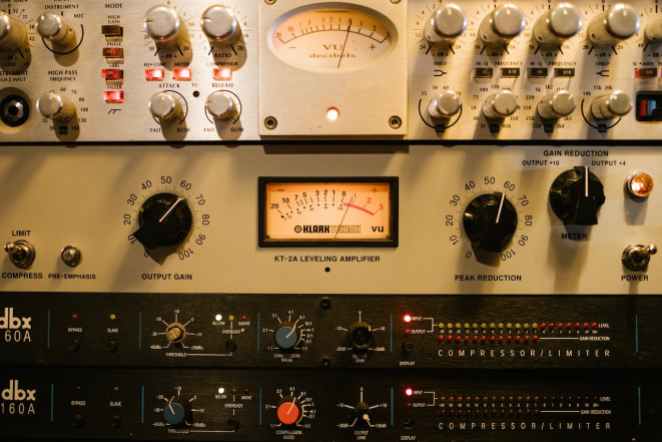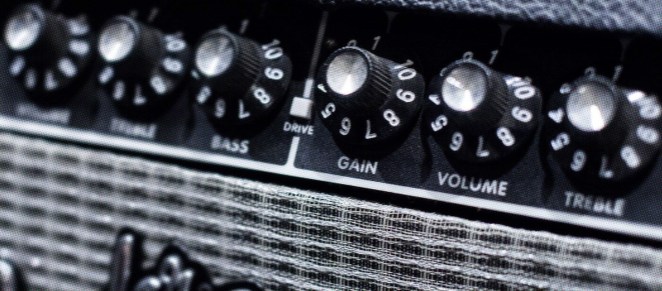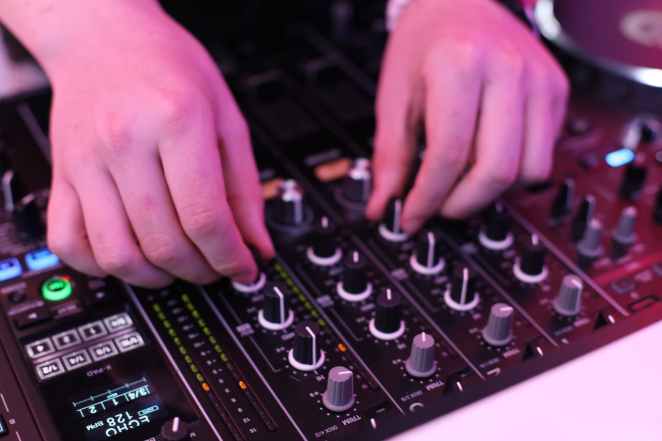In this article, we will finally answer the one question that has confused musicians for decades: What is the difference between "gain" and "volume" on your guitar amplifier?
Although they may sometimes seem indistinguishable, gain and volume are actually fundamentally different, and learning their differences will make you much more adept at dialing in the perfect tone for any situation.
Whether you are a guitarist, producer, sound designer, mixing engineer, or just a music enthusiast, learning these insights will be hugely beneficial. They will also help form the foundation for many other important concepts in music.
Once and for all, let's dive into exactly what differentiates gain from volume, and why this distinction is important.
Basics of Sound Amplification

Let's start with a brief breakdown of how sound amplification actually works. At a fundamental level, amplification is the process of increasing the strength or magnitude of a signal.
In the case of an electric guitar, the signal being amplified is the electrical signal created by the pickups, which is then transferred to the amp via the cable. The general process of capturing and amplifying sound is also known as "sound reinforcement."
Let's illustrate how a typical signal path works, using an electric guitar as an example.
As you strum the guitar strings, they vibrate, creating fluctuations in the magnetic field that surrounds the pickup. The wires in the pickup then generate a corresponding electrical signal. This signal mimics the exact vibrations and frequencies of the guitar strings.
This signal tends to be very weak at first, and that's why it gets transferred to the preamp where it gets boosted and/or modified. Finally, the speaker takes the louder, modified signal and projects it for the listeners to hear.
Click here to learn even more about how amplification works.
What Is Gain?
Gain affects the signal during the preamp stage. Other effects like EQ or reverb can be applied during this stage as well.
Gain is how much the input signal is amplified before any other effects are applied. Another way to think of gain is "input level."
What Is Volume?
Volume, on the other hand, can be thought of as "output level." It is usually found at the end of the signal chain, right before the master volume control, if there is one.
Volume refers to the level at which the already modified audio signal is delivered through the amp, speaker, or headphones. It allows the listener to set the desired listening level, without affecting the input signal itself.
Gain vs. Volume: Key Differences

So at its most basic level, the gain knob modifies the input signal, while the volume knob modifies the output level. Why is this important in practice? Well, they can affect your tone and sound quality quite differently.
Let's start with gain. Ideally, you'll want your audio signal to be within an appropriate range for signal processing, so that the modifications you make have the intended effect. This process of maintaining an appropriate level of gain throughout your signal path is commonly called "gain staging."
If the gain is too low, it can result in a number of issues. Possibly the most common is noise in your signal (also known as a low signal-to-noise ratio). If you have to turn the volume up to compensate for a low gain, then you might also be turning up an unwanted hissing sound or ambient noise.
Other issues that can arise from having your gain knob too low are an imbalance at later stages of mixing, suboptimal processing or effects, or even interference from other nearby electrical signals.
If your gain is too high, it can result in clipping, distortion, loss of dynamics, or unwanted feedback.
As for volume, the optimal level is a bit more straightforward. The volume knob controls the perceived loudness of your amplifier, so just make sure it's within an appropriate range for whoever your audience is (whether that audience is just you, your bandmates, or a crowd of people).
We all know what it's like when someone's volume is too low; you can't hear what they're playing. Likewise, if it's too high, it can blow your eardrums off! The appropriate volume level for an amp or speaker can vary drastically depending on the location and the circumstance.
The Role of Gain in Tonal Shaping
Gain has a much more crucial role in tone shaping than volume does. Let's explore the most common ways that gain can be used to shape your tone.
Firstly, it can be used to give the audio signal more impact. At higher levels, it can even cause harmonic distortion or saturation. The amount of distortion depends on your speaker's headroom compared to how much gain is applied.
Some well-known brands like Orange and Fender make amps where your tone (clean, crunch, overdrive, or distortion) is all determined by the level of gain. Clean genres like blues or jazz would typically be considered low gain, while heavier genres like metal tend to use high gain.
Gain can also have an effect on resonance, feedback, dynamics, and any number of other aspects of the signal, depending on which effects are applied later on in the chain.
The Role of Volume in Sound Control
In short, volume controls loudness. It tends to have little to no effect on the tonal qualities of the signal; it simply determines the output level.
The optimal volume depends on your environment and your situation. If you're playing a live show, do a sound check if you can, so that you can set the volume of all amps or PA systems to the appropriate range.
Common Misconceptions and Myths
The most common misconception about gain and volume is that they are the same thing. As you now know, if you've made it this far in the article, this is far from true.
Another misconception is that increasing gain will make the amp's output louder. Unlike volume, gain does not actually affect the perceived loudness, or overall output volume, of the speaker. Instead, it just increases the strength of the signal. More gain does not equal more volume.
The Importance of Balance

The best and most effective audio technicians know how to find the right balance between gain and volume in all stages of the signal chain (achieving ideal gain staging).
The right balance between gain and volume will ensure an audio signal that is free from unwanted clipping or distortion. It will also help you achieve the perceived loudness you want, so your signal sounds right in the context of the entire mix.
For live performers looking for the optimal balance, the best way to find it is to set your system's output to the desired level, then tinker with your gain knob so you can hear the effect it has on the signal's tonal qualities.
Getting in touch with your guitar amplifier and its controls will make you a more capable and versatile player. You'll be able to find the ideal settings for any circumstance. When in doubt, just use your ears.
Gain and Volume in Different Amplifier Types
Let's briefly discuss how gain and volume are implemented in different types of amps.
For tube amps, which use vibrating glass tubes to generate sound, adding gain tends to result in a natural distortion, which many people call "tube distortion" or "tube saturation." This sound has a warm bite that makes it very sought-after, especially for fans of the more old-school tone.
In solid state amps, which amplify the signal with transistors, gain can be applied without resulting in distortion. Distortion only occurs if the amount of gain exceeds the amp's headroom. Different amps have different clipping points, and the best way to find that point is by experimenting with your gain settings.
Finally, modeling amplifiers can digitally mimic specific tube or solid state amps, thereby mimicking the effect that adding more gain will have on the tone. Digital modeling amps tend to have several different amp emulations, each with their own behaviors with regard to gain.
Effects of Gain and Volume on Other Components
In some circumstances, you will have multiple audio components, each with their own gain and volume controls. Examples of this are speaker systems with multiple speakers or a guitar setup with multiple pedals.
In these cases, you'll want to maintain proper gain staging for every stop your signal makes along the way. There's no way to shortcut this; you'll have to manually adjust your gain knobs on each pedal, audio interface, or channel strip in order to achieve proper gain staging.
If you want to maintain a clean signal, then make sure the gain meters on your devices don't go into the red, as this is where clipping occurs.
Frequently Asked Questions (FAQs)
How does adjusting the gain affect the sound of my guitar?
Adjusting the gain on your amp can have effects on the guitar's tone, as well as how other effects like EQ and reverb will behave. It will not affect the output volume of the amp, however.
Is gain the same as distortion or overdrive?
Gain is not the same thing as distortion or overdrive. Distortion and overdrive are byproducts of adding gain. They can occur when the gain makes the strength of the signal exceed past the audio device's headroom.
What happens when I turn up the volume on my amplifier?
When you turn the volume up on your amplifier, the perceived loudness will increase. In most cases, the tonal qualities of the signal will not change. Only the output level will change.
Can I use gain to make my guitar louder?
Gain can be used to make your guitar louder in some corner cases. For example, if your gain is set to zero, then the signal will have little to no strength in the preamp stage. You can try increasing your gain and see if this increases your amp's output volume as well.
As a rule of thumb, though, if you want to make your guitar louder, then that is the job of the volume knob, not the gain knob.
How can I balance the gain and volume for the best sound?
The ideal balance of gain and volume depends on what kind of tone you are going for. Since there are so many considerations (type of guitar, type of amp, size of the audience, types of effects applied, desired tonal qualities), we recommend setting your volume knob to the desired output level and then manually adjusting your gain to achieve your desired tone.
Does adjusting the gain affect the clarity of my guitar sound?
In short, adjusting your gain will affect the clarity of your guitar's sound. For a clean tone, make sure your signal is not clipping at any point in the signal chain.
For a distorted sound, you can apply enough gain to result in a tasteful amount of clipping. You'll know a signal is clipping if the gain meter on your amp, pedal, or audio interface is in yellow or red.
On a typical gain meter, yellow means "soft clipping," while red means "hard clipping."
What's the difference between gain and master volume on an amplifier?
Gain will affect the strength of the signal in the preamp stage before any effects are applied. Master volume will affect the amp's output level after all effects have been applied.
Can I achieve a clean sound with high-gain settings?
You can achieve a cloud tone even with high gain settings as long as your signal stays below the system's clipping point. The more powerful the signal, the less headroom you will have. A lot of headroom means a clean signal. Little headroom can result in soft clipping, and no headroom will result in hard clipping.
Why do some amplifiers have a "master volume" and a "channel volume"?
Amplifiers with multiple channels often have separate volume controls for each channel. "Channel volume" will affect only one channel, while "master volume" will determine the overall output level, affecting all channels equally.
Can I use my amplifier's gain and volume controls to shape my tone for different music genres?
Absolutely! Gain and volume have many different creative applications and can be used to achieve all sorts of different tones. Just experiment and use your ears to see what kind of settings you like best for the genres you like to play.
Conclusion
So there we have it! The fundamental differences between gain and volume laid out in a simple, digestible way.
In essence, gain refers to the strength of the signal, while volume refers to the loudness of the speaker.
You can refer back to this article as a resource if you ever find yourself confused about this topic. We encourage you to play around with the gain and volume settings on as many amps, pedals, or audio interfaces as you can find because experience is the best teacher.
These are very important concepts to understand for musicians of all kinds, and a deep understanding of them is something that cannot be taught. It simply comes from experience with enough devices, interfaces, and styles of music.
So go use your understanding of gain and volume to dial in a great tone on your amp, and remember to have fun in the process!
